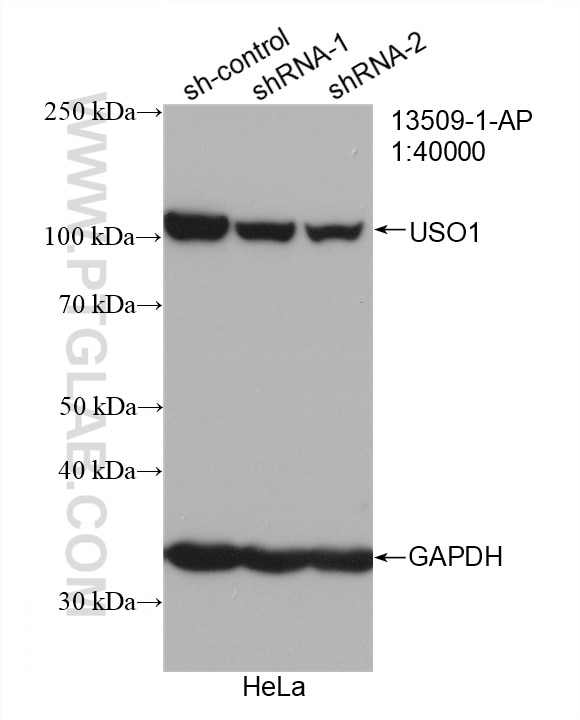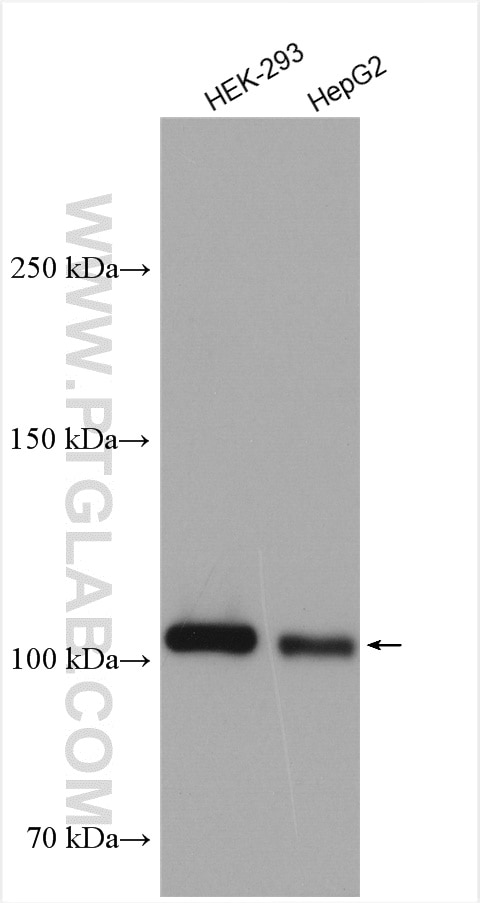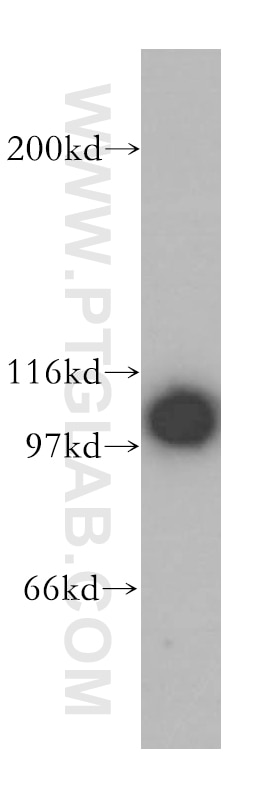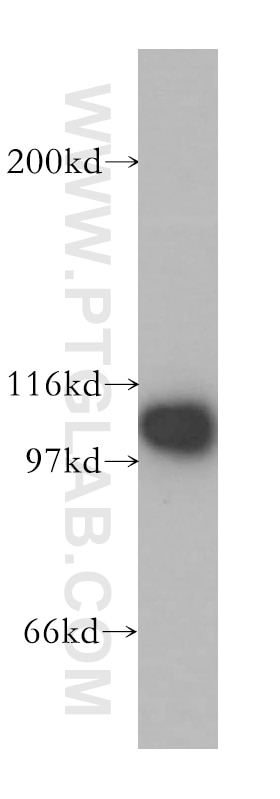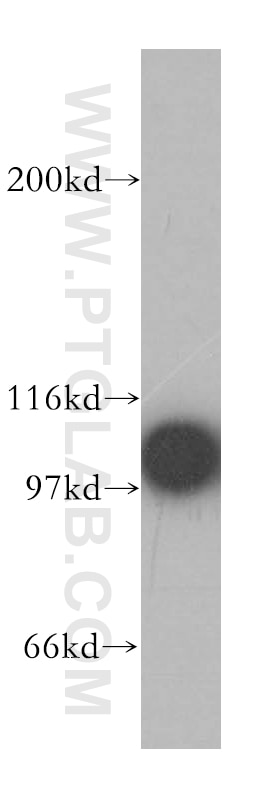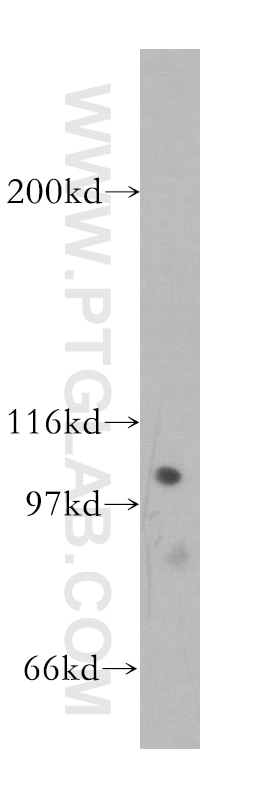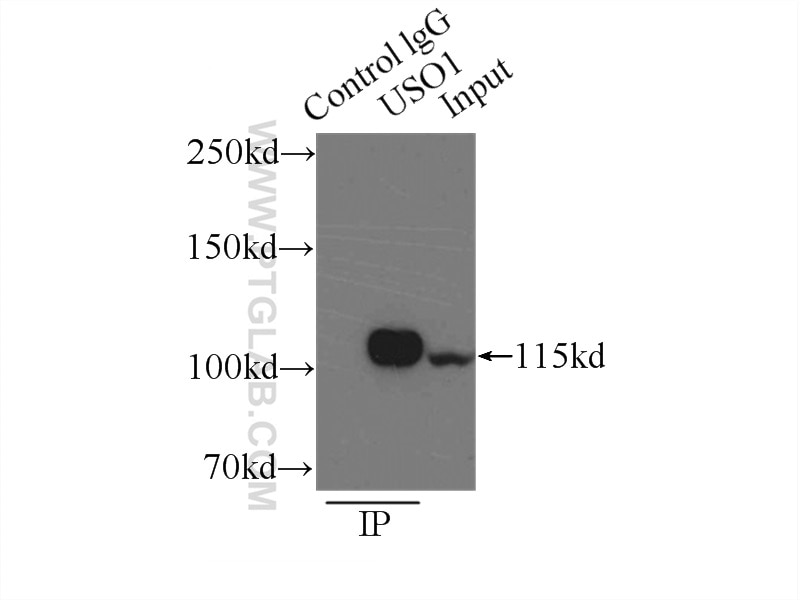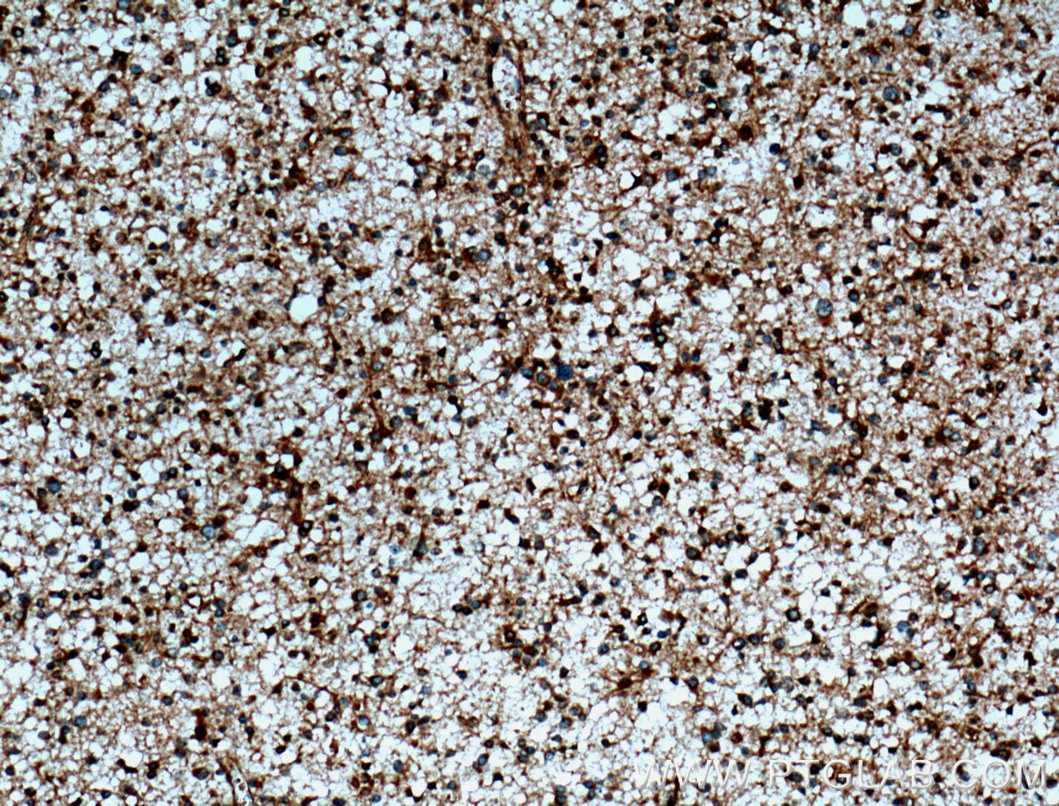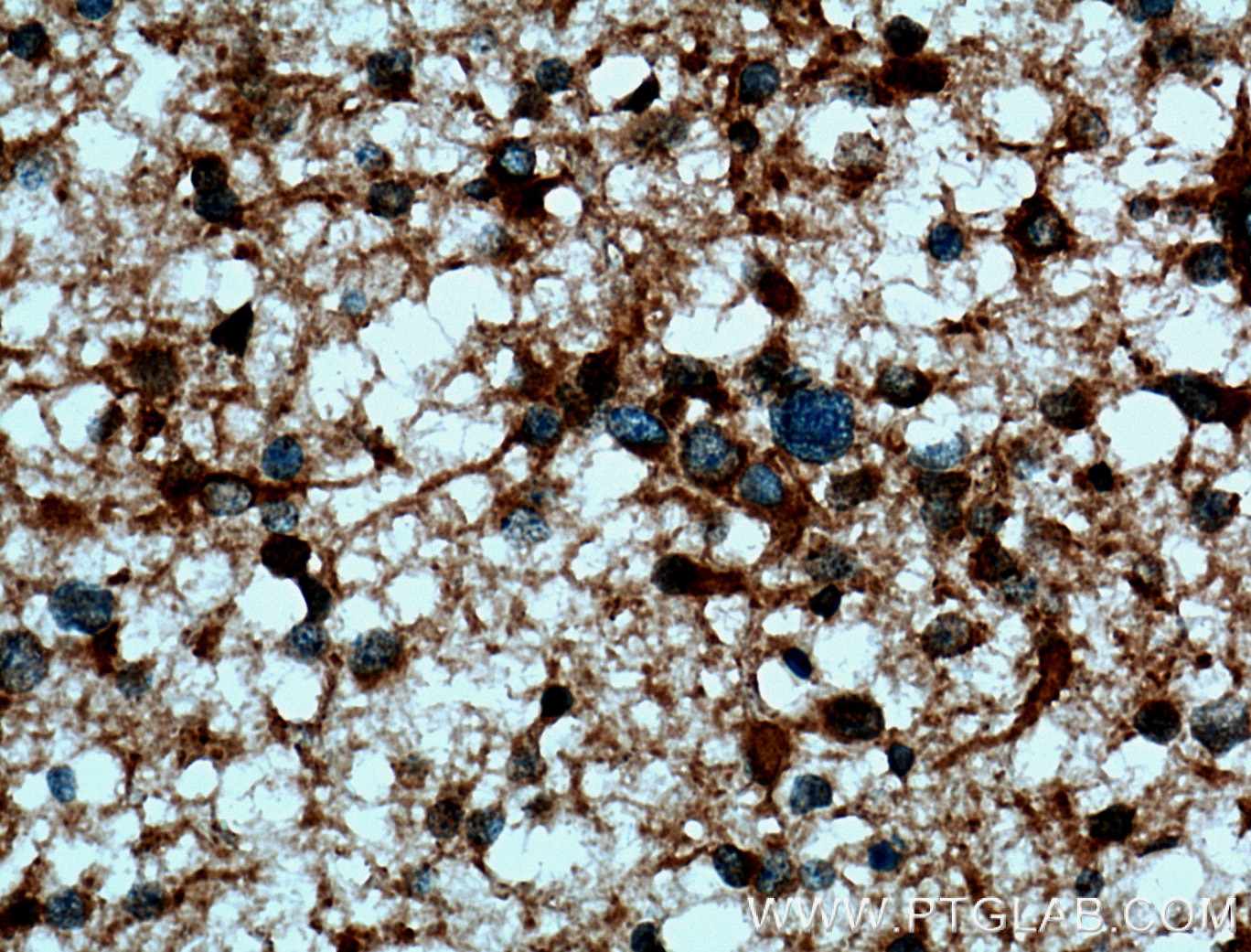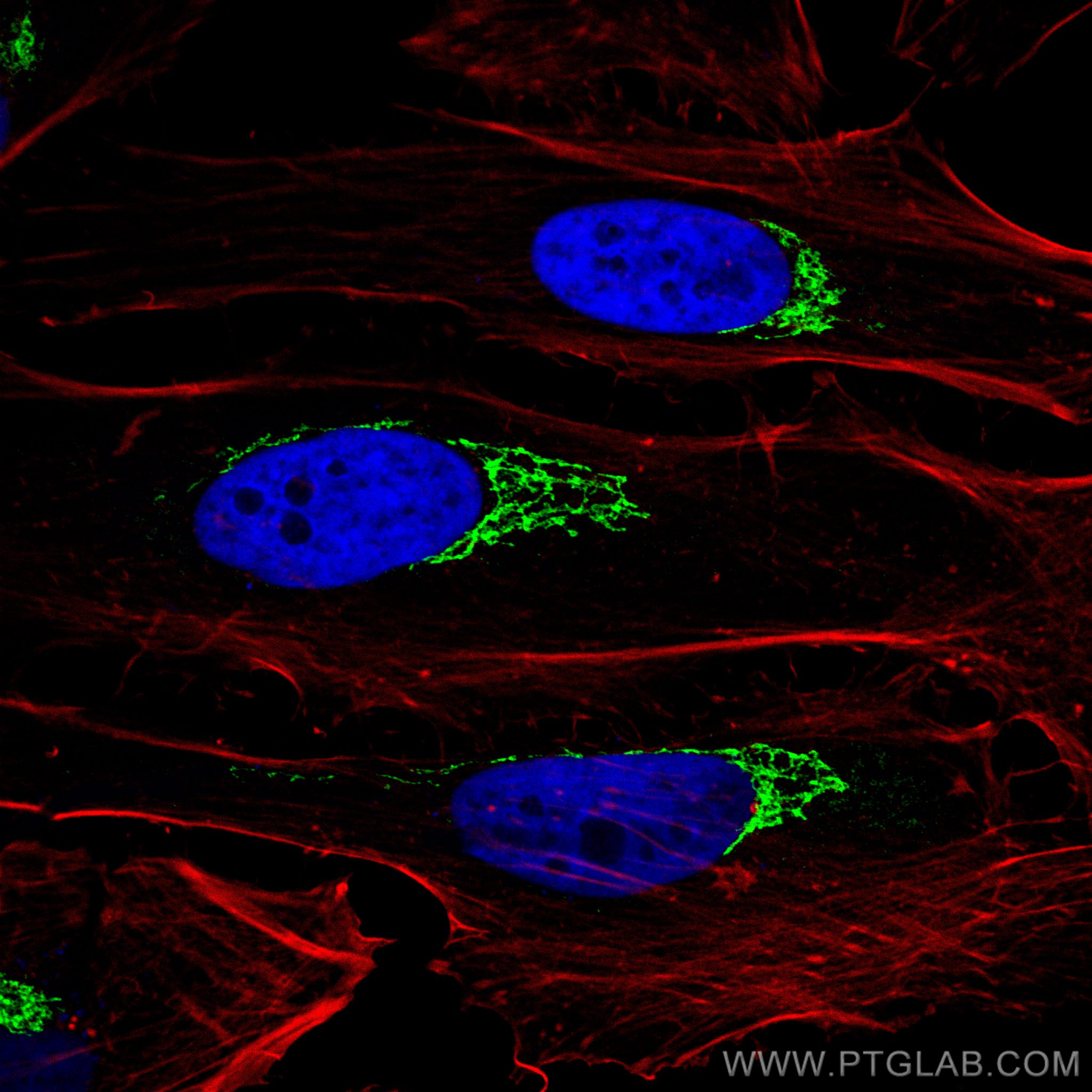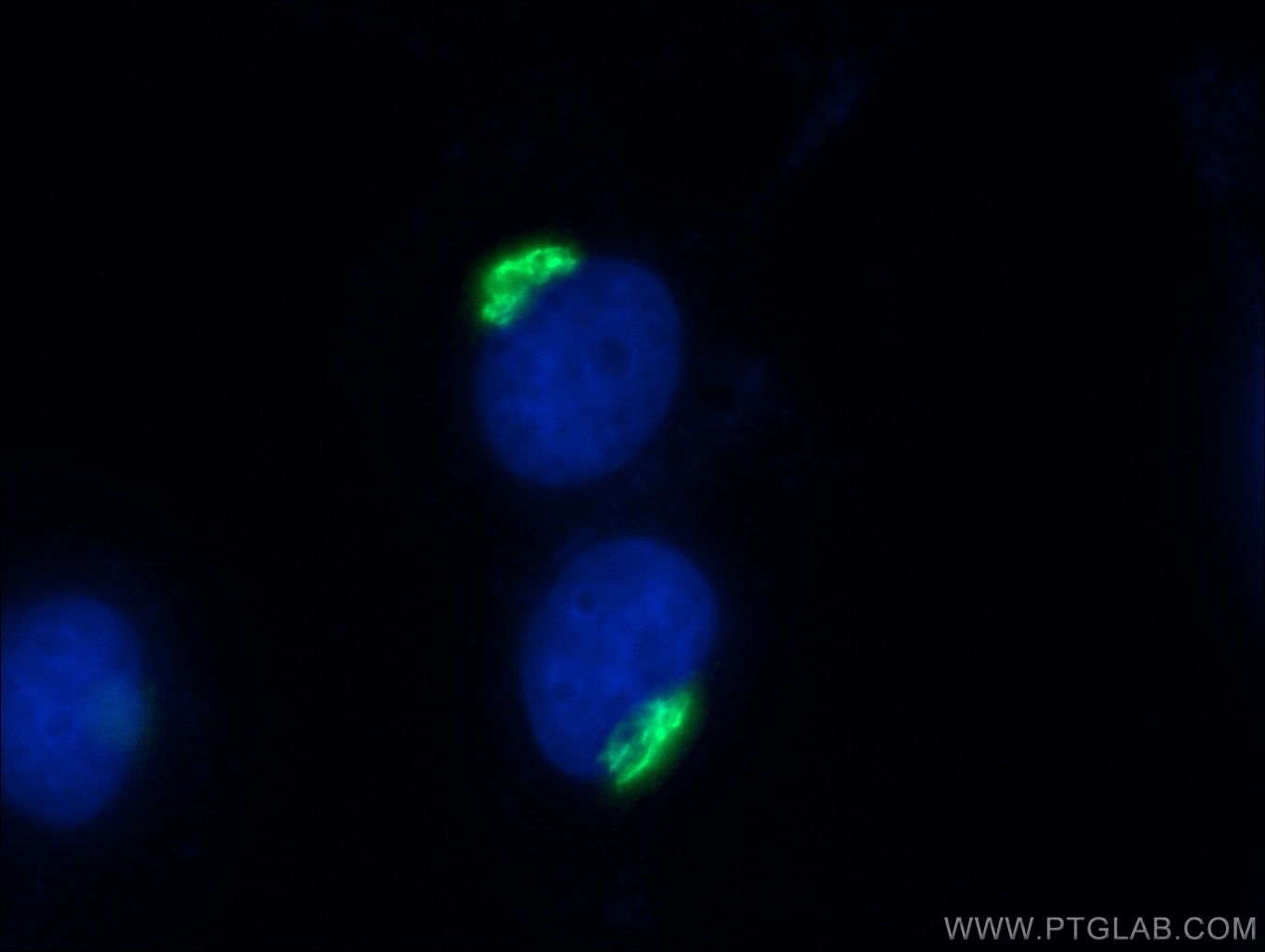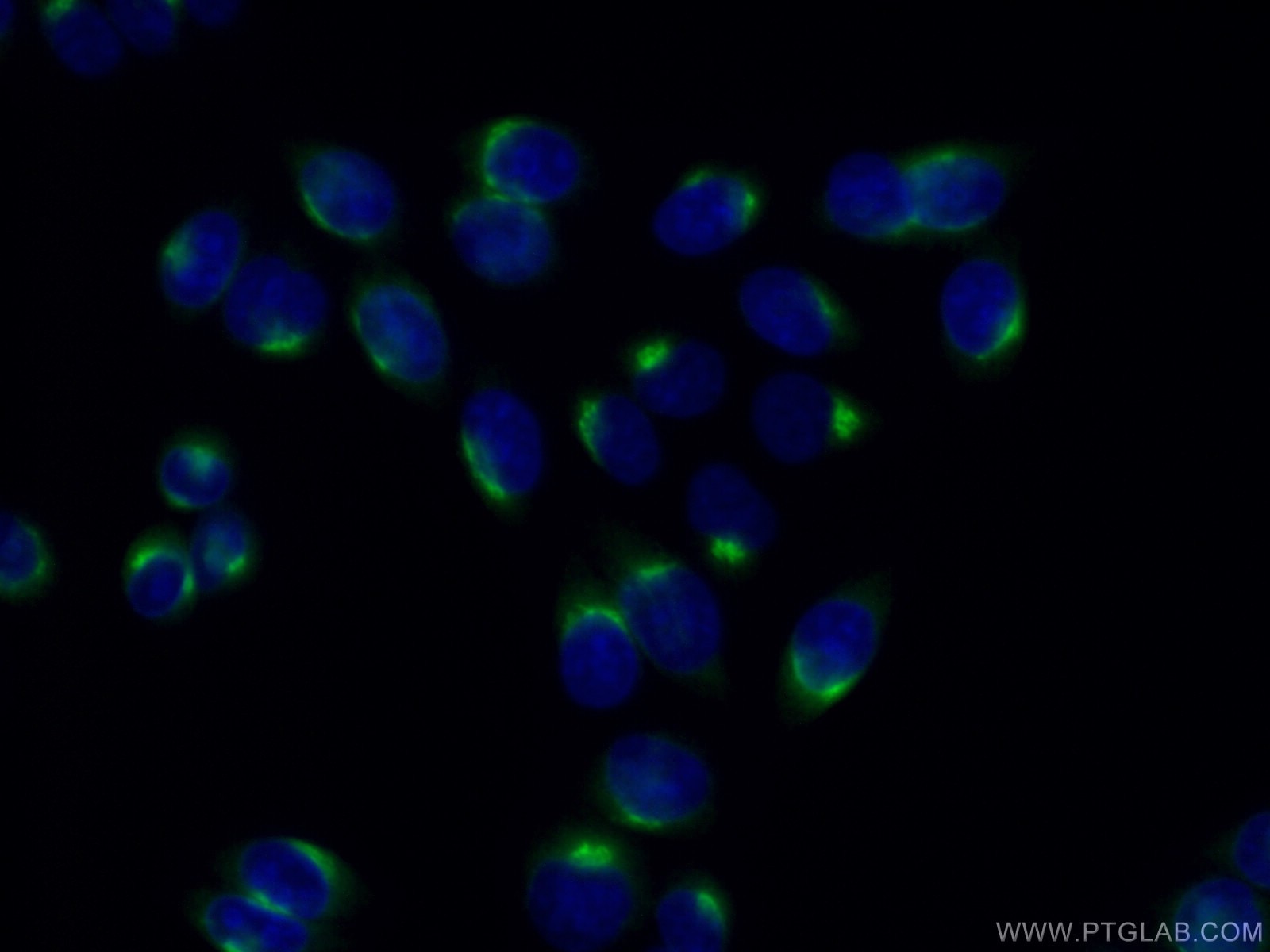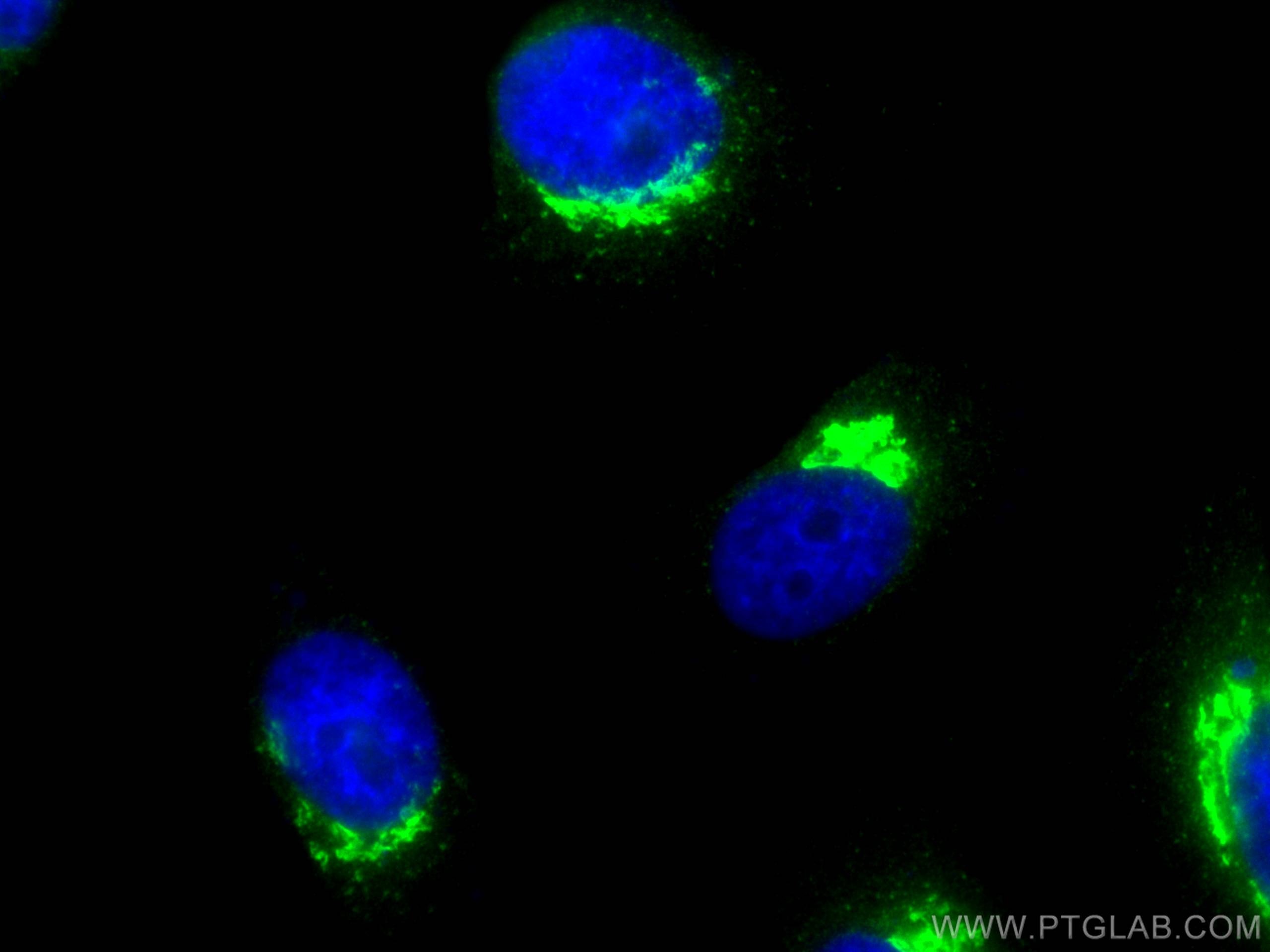- Phare
- Validé par KD/KO
Anticorps Polyclonal de lapin anti-p115, USO1
p115, USO1 Polyclonal Antibody for WB, IHC, IF/ICC, IP, ELISA
Hôte / Isotype
Lapin / IgG
Réactivité testée
Humain, rat, souris
Applications
WB, IHC, IF/ICC, IP, CoIP, ELISA
Conjugaison
Non conjugué
N° de cat : 13509-1-AP
Synonymes
Galerie de données de validation
Applications testées
| Résultats positifs en WB | cellules HEK-293, cellules HeLa, cellules HepG2, cellules SH-SY5Y, tissu cérébral humain, tissu de thymus de souris, tissu testiculaire de souris |
| Résultats positifs en IP | tissu cérébral de souris |
| Résultats positifs en IHC | tissu de gliome humain il est suggéré de démasquer l'antigène avec un tampon de TE buffer pH 9.0; (*) À défaut, 'le démasquage de l'antigène peut être 'effectué avec un tampon citrate pH 6,0. |
| Résultats positifs en IF/ICC | cellules HeLa, |
Dilution recommandée
| Application | Dilution |
|---|---|
| Western Blot (WB) | WB : 1:1000-1:8000 |
| Immunoprécipitation (IP) | IP : 0.5-4.0 ug for 1.0-3.0 mg of total protein lysate |
| Immunohistochimie (IHC) | IHC : 1:50-1:500 |
| Immunofluorescence (IF)/ICC | IF/ICC : 1:500-1:2000 |
| It is recommended that this reagent should be titrated in each testing system to obtain optimal results. | |
| Sample-dependent, check data in validation data gallery | |
Applications publiées
| KD/KO | See 2 publications below |
| WB | See 17 publications below |
| IF | See 18 publications below |
| CoIP | See 1 publications below |
Informations sur le produit
13509-1-AP cible p115, USO1 dans les applications de WB, IHC, IF/ICC, IP, CoIP, ELISA et montre une réactivité avec des échantillons Humain, rat, souris
| Réactivité | Humain, rat, souris |
| Réactivité citée | Humain, souris |
| Hôte / Isotype | Lapin / IgG |
| Clonalité | Polyclonal |
| Type | Anticorps |
| Immunogène | p115, USO1 Protéine recombinante Ag4431 |
| Nom complet | USO1 homolog, vesicle docking protein (yeast) |
| Masse moléculaire calculée | 962 aa, 108 kDa |
| Poids moléculaire observé | 115 kDa |
| Numéro d’acquisition GenBank | BC032654 |
| Symbole du gène | USO1 |
| Identification du gène (NCBI) | 8615 |
| Conjugaison | Non conjugué |
| Forme | Liquide |
| Méthode de purification | Purification par affinité contre l'antigène |
| Tampon de stockage | PBS with 0.02% sodium azide and 50% glycerol |
| Conditions de stockage | Stocker à -20°C. Stable pendant un an après l'expédition. L'aliquotage n'est pas nécessaire pour le stockage à -20oC Les 20ul contiennent 0,1% de BSA. |
Informations générales
p115, also known as USO1, TAP (transcytosis-associated protein) or VDP (vesicle docking protein) is a general vesicular transport factor and plays an important role at different steps of vesicular transport. It is a 962-residue peripheral membrane protein which recycles between the cytosol and the Golgi apparatus during interphase (PMID: 9478999). p115 forms stable homodimers (PMID: 19247479). Rab1 recruits p115 to coat protein complex II (COPII) vesicles during budding from the endoplasmic reticulum, where p115 interacts directly with a select set of SNARE proteins (PMID: 10903204). p115 is required for intra-Golgi transport, and also functions in endoplasmic reticulum to Golgi trafficking, Golgi biogenesis and exocytotic transport (PMID: 19247479).
Protocole
| Product Specific Protocols | |
|---|---|
| WB protocol for p115, USO1 antibody 13509-1-AP | Download protocol |
| IHC protocol for p115, USO1 antibody 13509-1-AP | Download protocol |
| IF protocol for p115, USO1 antibody 13509-1-AP | Download protocol |
| IP protocol for p115, USO1 antibody 13509-1-AP | Download protocol |
| Standard Protocols | |
|---|---|
| Click here to view our Standard Protocols |
Publications
| Species | Application | Title |
|---|---|---|
Mol Cell An mTORC1-GRASP55 signaling axis controls unconventional secretion to reshape the extracellular proteome upon stress. | ||
J Cell Biol Rapid degradation of GRASP55 and GRASP65 reveals their immediate impact on the Golgi structure. | ||
